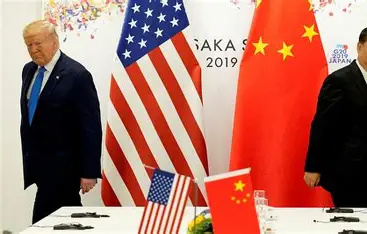Washington, D.C., October 10, 2025
Across the American heartland, thousands of farmers are once again caught in the crossfire of a renewed trade war between the United States and China as soybean silos overflow and global buyers turn elsewhere. The latest round of tariffs reimposed by the Trump administration has reignited tensions with Beijing, drawing agriculture back into the center of a geopolitical struggle that continues to test the resilience of rural America.
For years, China was the top destination for U.S. soybeans, purchasing billions of dollars’ worth annually and sustaining livelihoods across the Midwest. With retaliatory tariffs now in place, Beijing has sharply reduced its imports of American farm products, driving prices down and leaving farmers struggling to find new markets. “We’re sitting on millions of bushels that have no buyers,” said Tom Wheeler, an agricultural economist in Iowa. “China once bought more than half of our soybean exports. Losing that market again is a severe blow.”
U.S. exporters are seeking new opportunities in India, Vietnam, and the European Union, but these regions cannot absorb America’s massive supply. At the same time, Brazil and Argentina have stepped in to fill the gap, strengthening their dominance in global soybean trade while Chinese companies secure long-term contracts with South American producers. Rising logistics costs and fluctuating exchange rates have only worsened conditions for American farmers, pushing many closer to financial distress.
In rural states such as Iowa, Illinois, and Nebraska, frustration is growing among farmers who once supported Trump’s trade policies but are now bearing the cost. “We backed him because he said he would protect American farmers,” said Mark Halvorson, a soybean grower from Illinois. “Now we’re paying the price for politics we can’t control.” Analysts warn that the economic pain spreading across these key Midwestern regions could reshape the political landscape ahead of the next election.
Officials in Washington are under increasing pressure to provide relief. The U.S. Department of Agriculture has extended subsidy programs and crop insurance initiatives, but many experts believe these measures are temporary fixes that fail to address the deeper structural vulnerabilities in U.S. agriculture. The loss of the Chinese market has exposed how dependent American farmers are on global trade stability and how fragile those supply chains can become when politics take over economics.
From Beijing’s perspective, the strategy appears deliberate. China is diversifying its soybean imports by sourcing from Brazil, Russia, and emerging African suppliers to reduce reliance on the United States. Analysts say this realignment reflects Beijing’s long-term plan to secure food independence and lessen the economic leverage Washington once held. “This isn’t just about trade,” noted Dr. Linda Cho of the Center for Strategic Agri-Policy. “It’s about food security and influence. China is positioning itself to never again be vulnerable to foreign supply shocks.”
The fallout extends beyond soybean fields. Global supply chains are being disrupted, shipping costs are climbing, and storage facilities in the Gulf of Mexico are nearing capacity. With fertilizer prices still volatile and climate conditions tightening yields, many farmers are bracing for one of the most difficult harvest seasons in over a decade. Smaller producers, in particular, face mounting credit pressure as banks grow cautious about lending to a sector already weakened by market uncertainty.
The Biden administration’s earlier efforts to stabilize trade relations with China had temporarily revived exports, but the reintroduction of tariffs has reversed much of that progress. Experts caution that even if negotiations resume, it will take years to rebuild trust and restore the trade relationships that once defined the U.S.–China agricultural corridor. “You can’t replace decades of business partnerships overnight,” Wheeler added. “Markets don’t recover as fast as they collapse.”
As the 2025 harvest season unfolds, the question hanging over the heartland remains both simple and urgent: who will buy the soybeans? The answer will determine not only the future of American agriculture but also the economic stability of the communities that have long fed the world. For many farmers, this is no longer just a trade dispute—it is a fight for survival in a world where global politics now decide the price of every bushel.



